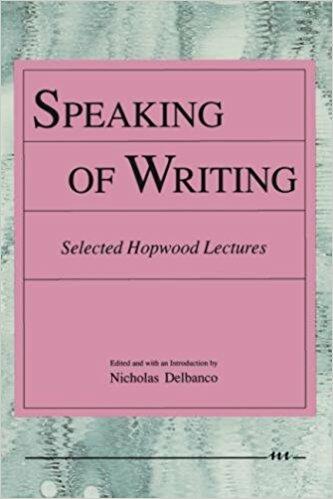Speaking of Writing
Selected Hopwood Lectures
Essays on the art of writing by some of the nation's finest writers
Description
Essays on the art and craft of writing by some of the nation’s finest writers make up this rich collection, from Louise Bogan’s meditation on popular and unpopular poetry, to Saul Bellow’s assessment of the future of fiction, to Francie du Plessix Gray’s reflection on womenand Russian literature. Spanning five decades of writing, the essays address topics both timely and timeless in nature, and cover both the process and the product of writing.
These essays were originally presented at the Hopwood Lecture series at the University of Michigan in conjunction with the annual awarding of the Hopwood Prizes in creative writing. The internationally recognized awards are granted by the bequest of playwright Avery Hopwood (1884-1928), who sought to encourage student work in the fields of dramatic writing, fiction, poetry, and the essay. The essays speak to the apprentice writer, finding their focus in a twinned discussion of the craft of prose and the art of poetry. The authors share an assumption that literature matters, and vitally, to the culture it reports on and sustains.

